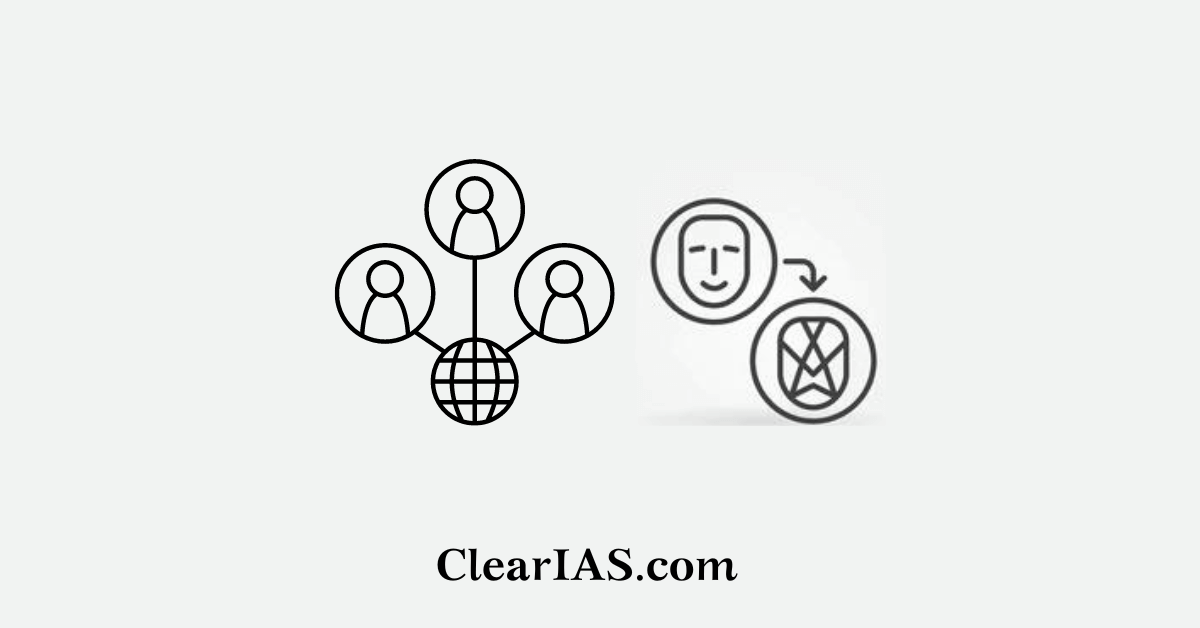
Recent advancements in artificial intelligence (AI) and cloud computing technologies have led to rapid development in the sophistication of audio, video, and image manipulation techniques.
This manipulated media content is commonly referred to as “deep fakes”.
Read more about Artificial intelligence (AI).
What are Deep Fakes?
- Deepfake is a type of synthetic media in which a person in an already-existing video or image is replaced with another person. It manipulates the audio/video, which has the propensity to deceive, using machine learning and artificial intelligence.
- Due to the ease with which bogus news, celebrity pornographic content, etc. get shared online, it has drawn attention.
- It makes a fake version of original or real audio-visual content by superimposing new audio or image over an existing media file.
- In September 2019, the AI company Deeptrace discovered 15,000 deep fakes videos online—nearly tripling in just nine months. A startling 96% of them were pornographic, and 99% of them matched the faces of famous women to porn actors.
How did Deep Fakes work?
- Deepfake content is created by using two competing AI algorithms – one is called the generator and the other is called the discriminator.
- The discriminator is tasked with determining if the fake multimedia content produced by the generator is real or manufactured.
- A generative adversarial network is created when the generator and discriminator work together (GAN). Every time the discriminator correctly recognises the content as being fake, it gives the generator important insights into how to make the next deep fakes better.
- The first step in establishing a GAN is to identify the desired output and create a training dataset for the generator.
- Video clips can be supplied to the discriminator after the generator starts producing output at a level that is acceptable.
Benefits of Deep Fakes technology
- In order to train disease detection algorithms for rare diseases and to allay patient privacy concerns, GANs can be employed to create fictitious medical images.
- Deepfake can accelerate the accessibility quest to improve equity.
- As the discriminator becomes more adept at recognising phoney video clips, the generator becomes more proficient at producing them. The generator, on the other hand, improves at producing phoney videos as the discriminator does at recognising them.
- With the development of Artificial General Intelligence (AGI), artificial intelligence will soon be able to reason more accurately.
- Deepfake movies can animate exhibits at museums and galleries.
- AI avatars can be produced using deep fakes technology and utilised in instructional videos.
- Since lockdowns and health concerns have made video productions involving actual people much more challenging to carry off, startups like London-based Synthesia have been drawing increased attention from the corporate sector.
- Deepfake technology can be utilised to build individual avatars in addition to being used for entertainment and instruction.
- Easy identity protection: For e.g: AI-generated avatars have been used to protect the identity of interviewees in news reports about the persecution of LGBTQ people in Russia.
- As deep fakes technology increasingly advances, Disney has improved their visual effects using high-resolution deep fakes face swapping technology.
Challenges with Deep Fake
- Deepfake causes financial fraud, which poses problems for the entire financial system.
- In the era of the threat of fake news, it also poses a threat to the security of cyber systems and the validity of online information.
- Deepfakes in phishing efforts would make it more challenging for people to recognise a hoax.
- In any nation, deep fakes can be used to sabotage democratic procedures like elections.
- The potential for harm to people, organisations, and societies is enormous since it can be used to generate phoney pornographic videos and make politicians appear to say things they did not.
- Any genuine evidence of a crime can be easily discounted as false because the public is so distrustful due to the prevalence of deep fakes.
- Fake movies are likely to become more popular outside the world of celebrities as new technology enables unskilled people to create deep fakes with just a few images. This will feed the growth of revenge porn.
- The use of fake identities and impostor frauds in cybercrime is rising.
- Credibility and authenticity issue: The presence of deep fakes makes it more difficult to determine whether videos are real or not.
Way forward
- We must be able to interpret, comprehend, translate, and utilise the information we come across as media consumers.
- Meaningful rules developed in cooperation with the technology sector, civil society, and government can help deter the production and dissemination of malevolent deep fakes.
- Policymakers need to be aware of the threats that deep fakes pose to the government, society, economy, culture, and local communities.
- Improving media literacy is a precursor to addressing the challenges presented by deep fakes.
- Artificial intelligence-backed technology solutions to identify and stop deep fakes are the best way to combat this threat.
- Blockchains can be used to digitally sign and verify the authenticity of a video or document because they are resilient to numerous security concerns.
Conclusion
Deepfakes are produced by adversarial training (usually using GANs), so by trying to deceive an algorithmic detector and refining the findings, the deep fakes become more convincing.
To lessen the harm posed by malicious deep fakes, cooperative efforts and collective tactics across statutory restrictions, platform policies, technical intervention, and media literacy can offer efficient and moral responses.
Read: Meta shutting down Fact-Checkers
Article Written by: Remya






Leave a Reply